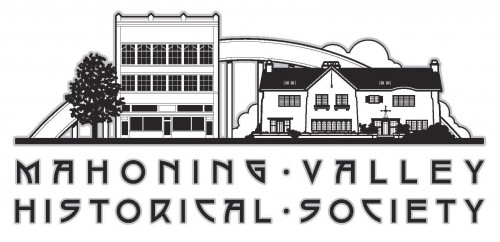Hispanics in the Mahoning Valley
Exerpted from An Ethnic Enclopedia:The Peopleing of the Mahoning Valley
An essay titled Hispanic by Portofino Esparra, Jr.
The major influx of Puerto Ricans occurred between the years of 1942 and 1960. They were drawn by the lure of the then burgeoning steel industry. Initially, some had been recruited by the steel mills because of the strong work ethic that they displayed. Since Puerto Ricans were United States citizens by virtue of the Spanish American War of 1898, they were able to migrate to the Mahoning Valley with the same ease as persons who traveled between states. Thus, once the first few had arrived the news of economic opportunity awaiting in the Valley quickly spread throughout the island.
Although the men often came fisrt to take their jobs in the mills, it was not long before they were joined by their wives, brothers, sisters, and other relatives. Ovften times entire families would live in the same apartment building until respective members could afford to live elsewhere. They settled primarily on the lower East Side and Lower South Side of Youngstown. Just as with the Spaniards a Hispanic community developed in Campbell along the Wilson Avenue corridor.
As the steel mills flourished so did the Puerto Rican community. It did not take long for the Puerto Ricans to realize the American dream of owning a home within their community. In 1942, Rafael Romero was the first of this wave of Puerto Ricans to arrive on the mainland. He obtained work at the Youngstown Sheet and Tube Company, married and raised their children A gentle yet resourceful man he quickly established himself as an influential leader within his community. Rafael, his wife Marta and other fellow compatriots, working with the diocese of Youngstown, established the first Hispanic church in the city of Youngstown, St. Rose of Lima.

Folk Festival at the International Institute. Entertainment on the stage. Soneritos Melodicos, a Hispanic group from St. Rose de Lima Church, directed by Phil Gonzales and his wife; and Mrs. Ilia Reyes.
In 1953, under the leadership and vision of bishop James McFadden the diocese of Youngstown recognized the need to create a Spanish speaking parish for the influx of Puerto Ricans that continued to migrate to the Valley. With the establishment of St. Rose of Lima Puerto Ricans could now have their own parish, rather than worship in the basement of the Cathedral or at St. John’s Church. The parish served the religious needs of the Puerto Rican Catholics and helped them to integrate into the community at large.
By 1953 the Puerto Rican population reached about 3,000 and they were beginning to create a stable community in Youngstown. Like many other groups who came to the area, Puerto Ricans faced many problems. Of these problems the most severe were results of the language barrier, loss of employment, acculturation and assimilation, discrimination and housing. Several organizations were formed in the 1950’s to assist Puerto Ricans including the Sons of Borinquen Social Culb, the Club Democrata Puertoriqueno and the Organization Civica y Cultural Americana (OCCHA).
Founded in 1972, OCCHA offers counseling, English classes, translation services and job opportunities with the cooperation of area businesses.


You must be logged in to post a comment.